welcome! this tumblr is strictly for educational purposes only!
Don't wanna be here? Send us removal request.
Text
Global Social Media in China: A World Apart, Yet Deeply Connected
China’s social media landscape is distinct and self-contained, shaped by government regulations, cultural dynamics, and rapid technological advances. Platforms like WeChat, Weibo, Douyin, and Xiaohongshu dominate a space insulated from global competitors due to the “Great Firewall,” creating a unique ecosystem that combines communication, commerce, and entertainment (Plantin & de Seta 2019). This blog explores the Chinese social media landscape, its global impact, challenges, and the controversies surrounding platforms like TikTok.
The Unique Social Media Landscape in China
Unlike much of the world, where platforms like Facebook, Twitter, and Instagram dominate, China’s social media thrives on homegrown platforms designed to cater to its massive population’s specific needs. WeChat, for instance, integrates messaging, payments, and mini-programs that allow users to perform a range of activities from booking appointments to online shopping—all without leaving the app (Jesse 2024).
Douyin, the Chinese version of TikTok, offers an entertainment-first approach, blending short-form videos with a sophisticated AI-driven algorithm that personalizes content (Zhao 2020). These platforms not only entertain but also serve as hubs for commerce and innovation.
The Role of Regulation
The Chinese government enforces strict content regulation to maintain control over the internet, ensuring platforms comply with state policies. This regulation shapes what users see, often suppressing politically sensitive topics while promoting state narratives (He, Eldrige & Broersama 2024).
For example, a Guardian investigation revealed TikTok’s moderation policies censored content deemed unfavorable to Beijing. Videos about protests, LGBTQ+ rights, and criticisms of the Chinese government were reportedly suppressed, showcasing the extent of control exerted over both domestic and international versions of Chinese platforms. Such revelations have fueled mistrust of Chinese-owned apps globally (Hern 2019).
Social Commerce and Innovation
Chinese platforms have pioneered social commerce, blending e-commerce with engaging content. Livestream shopping is one of the most notable innovations, as influencers demonstrate products and interact with viewers in real-time, driving impulse purchases (Ni & Ueichi 2024). This model has inspired Western platforms like Instagram and Amazon Live to incorporate similar features
WeChat’s mini-programs exemplify another innovation: these embedded apps allow businesses to offer services directly within the platform, eliminating the need for standalone apps or websites (Cheng et al. 2020). This seamless integration positions Chinese platforms as leaders in functional and versatile design.
Challenges of Chinese Social Media Platforms
Censorship is one of the most significant criticisms leveled against Chinese platforms. Government oversight limits free expression, and platforms actively remove content that violates these rules. For global platforms like TikTok, accusations of political bias have raised concerns about their neutrality and independence.
Privacy issues are another concern. Chinese platforms are known for collecting vast amounts of user data, which some argue could be accessed by the government under national security laws. Globally, this has resulted in increasing scrutiny, with several governments wary of engaging with Chinese technology.
Additionally, the closed nature of China’s digital ecosystem creates barriers for foreign companies and limits Chinese users’ access to global platforms, reducing the potential for cultural and technological exchange.
Looking Ahead
As Chinese platforms continue to innovate, they will likely shape the global social media landscape further. However, balancing their domestic compliance with international trust and transparency will be critical. Striking this balance could determine whether Chinese platforms can expand sustainably beyond their borders.
For global audiences, the rise of Chinese platforms offers both inspiration and caution. The innovations they introduce enhance user experiences, but they also raise pressing questions about censorship, privacy, and ethical responsibility.

China’s social media ecosystem exemplifies a unique blend of innovation, state control, and cultural adaptation. Platforms like WeChat and Douyin are redefining how people connect, shop, and engage online, both within China and globally. However, the challenges of censorship, data privacy, and geopolitical tensions remain significant obstacles.
As the world watches the evolution of Chinese social media, the lessons learned from this complex ecosystem will shape the future of digital interaction and the ongoing dialogue about technology’s role in society.
1 note
·
View note
Text
Social Gaming: Where Virtual Fun Meets Real Connections
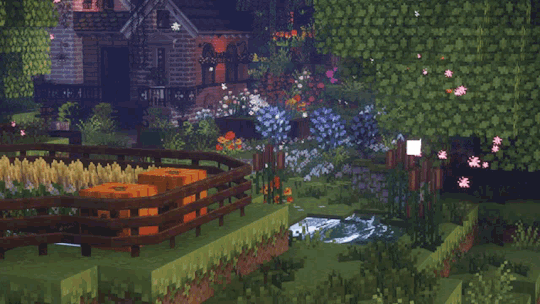
Social gaming has evolved into a global phenomenon, blending entertainment with connection. From in-game chats and collaborative missions to virtual farming and candy-matching competitions, it has reshaped how we interact and build relationships. Platforms like Facebook Gaming, popularizing hits like FarmVille and Candy Crush, played a pivotal role in integrating casual gaming with social networking. This blog explores the appeal of social gaming, Facebook’s influence, its impact on purchasing behavior, and the benefits and challenges of gaming in the digital age.
The Appeal of Social Gaming
Social gaming thrives on interaction, whether through competition, cooperation, or casual play. Games like Fortnite, Among Us, and Minecraft have brought friends together virtually, while Animal Crossing became a cultural staple during the pandemic, maintaining connections despite isolation (Basu 2020).
Facebook was an early pioneer of social gaming. In the late 2000s, FarmVille allowed users to plant crops, visit friends’ farms, and exchange gifts, seamlessly merging gaming with social interaction (Stuart 2014). Similarly, Candy Crush captivated casual gamers with its puzzles, sparking friendly competition on Facebook. These games blurred the lines between gaming and networking, offering new ways to connect (BBC News 2013)
Facebook Gaming: A Social Gaming Powerhouse
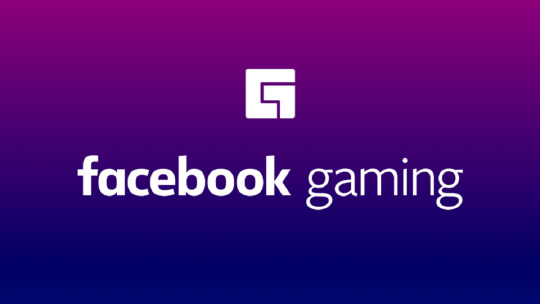
Facebook revolutionized social gaming by embedding games into its platform. Early hits like FarmVille and Mafia Wars engaged players in playful interactions beyond status updates (Victor 2020). These games relied on social mechanics, encouraging players to invite friends, exchange resources, and compare scores.
Today, Facebook Gaming has expanded beyond casual games. Its embrace of live-streaming allows players to broadcast gameplay, build communities, and compete with platforms like Twitch and YouTube Gaming.
Games That Defined an Era

FarmVille was more than a farming simulation—it was a virtual social hub. Released in 2009, it attracted millions of users who cultivated crops, decorated farms, and collaborated with friends, showcasing the potential of combining gaming with social media (Stuart 2014). However, the original game was shut down on December 31st of 2020, which left a lot of fans and hardcore farmer gamers upset and disappointed (ShawnS 2020).

Similarly, Candy Crush turned casual gaming into an obsession. With simple mechanics and countless levels, it became a favorite for all ages. Through Facebook integration, players could request extra lives, celebrate achievements, and compete for high scores, making it a personal and social experience (BBC News 2013).
Impact on Purchasing Behavior
Social gaming has transformed consumer spending habits, particularly through microtransactions (Lee 2023). Platforms like Facebook have integrated purchasing into gameplay via rewards, limited-time offers, and social sharing features. Players often make impulsive purchases influenced by peer pressure or competition, contributing to a growing in-game economy (Lee 2023)
For instance, Candy Crush saw users spending on in-game boosts and extra moves (BBC News 2014) with Facebook simplifying the purchasing process. These microtransactions have made social gaming a lucrative industry while subtly encouraging impulsive spending habits.
Building Relationships Through Social Gaming

Social gaming fosters connections, whether sharing small moments with loved ones in FarmVille or bonding with strangers in multiplayer games. During the pandemic, games like Among Us and Animal Crossing became virtual meeting places, strengthening relationships when physical interactions were limited (Yee & Sng 2022).
Beyond personal connections, players form communities around shared interests. Platforms like Discord and Facebook groups provide spaces to discuss strategies, share achievements, and socialize, extending gaming friendships beyond the screen.
The Challenges of Social Gaming
Despite its benefits, social gaming has challenges. Toxicity, including harassment and trolling (Cook, Tang & Lin 2023), is a persistent issue. Facebook and other platforms have faced criticism for insufficient moderation of harmful behaviors in gaming communities (Sibai, Luedicke & de Valck 2024).
Financial exploitation through microtransactions is another concern. Games like FarmVille and Candy Crush encourage spending on in-game items, which can strain finances for some players. Additionally, the addictive design of many games can lead to excessive screen time, potentially impacting overall well-being.
Looking Ahead: The Future of Social Gaming
Social gaming continues to evolve. Platforms like Facebook Gaming are incorporating live-streaming and esports, expanding opportunities for players and creators alike. Emerging technologies like virtual reality (VR) and augmented reality (AR) promise to redefine gaming, offering immersive 3D experiences for titles like FarmVille and Candy Crush.
Social gaming has transcended its early days on Facebook, becoming a global cultural force that connects players, fosters creativity, and drives innovation. Whether it’s farming, candy-matching, or building in virtual worlds, gaming is about more than fun—it’s about creating meaningful connections and communities.
Reference list
Basu, T 2020, ‘Why games like Animal Crossing are the new social media of the coronavirus era’, MIT Technology Review, viewed 5 November 2024, <https://www.technologyreview.com/2020/04/16/999944/coronavirus-animal-crossing-video-games-social-media/>.
BBC News 2013, ‘What Is the Appeal of Candy Crush Saga?’, BBC News, 18 December, viewed 5 November 2024, <https://www.bbc.com/news/magazine-25334716>.
Cook, CL, Tang, S & Lin, J-H 2023, ‘Comparing Shades of darkness: Trolling Victims’ Experiences on Social Media vs. Online Gaming’, Frontiers in Psychology, vol. 14, Frontiers Media, viewed 5 November 2024, <https://pmc.ncbi.nlm.nih.gov/articles/PMC10478268/>.
ShawnS 2020, ‘After 11 Years, the Original FarmVille Shuts down on December 31st’, Delisted Games, viewed 5 November 2024, <https://delistedgames.com/after-11-years-the-original-farmville-shuts-down-on-december-31st/>.
Sibai, O, Luedicke, MK & de Valck, K 2024, ‘Why Moderators Can’t Protect Online Communities on Their Own’, Harvard Business Review, viewed 5 November 2024, <https://hbr.org/2024/11/why-moderators-cant-protect-online-communities-on-their-own>.
Stuart, K 2014, ‘10 ways Facebook changed gaming for ever’, The Guardian, The Guardian, viewed 5 November 2024, <https://www.theguardian.com/technology/2014/feb/04/10-ways-facebook-changed-gaming-for-ever>.
The Daily 2024, ‘Social Gaming: What It Is and Why Everyone Is Talking About It’, The Daily, viewed 5 November 2024, <https://www.ballstatedaily.com/article/2024/10/social-gaming-what-it-is-and-why-everyone-is-talking-about-it?ct=content_open&cv=cbox_latest>.
Victor, D 2020, ‘FarmVille Once Took over Facebook. Now Everything Is FarmVille.’, The New York Times, 31 December, viewed 5 November 2024, <https://www.nytimes.com/2020/12/31/technology/farmville-zynga-facebook.html>.
Yee, AZH & Sng, JRH 2022, ‘Animal Crossing and COVID-19: a Qualitative Study Examining How Video Games Satisfy Basic Psychological Needs during the Pandemic’, Frontiers in Psychology, vol. 13, no. 13, viewed 5 November 2024, <https://pmc.ncbi.nlm.nih.gov/articles/PMC9022176/>.
0 notes
Text
Fandoms in the Digital Age: Creativity, Community, and Challenges
Fandoms have long provided a haven for marginalized groups, uniting individuals through shared passions and experiences (Gray, Sandvoss, & Harrington 2007). The digital era has transformed fandoms into vibrant, global communities, empowering fans to interact with idols, share creations, and shape their identities (Booth 2015; Lee & Lim 2019, cited in Lee et al. 2020). Social media has eliminated traditional gatekeepers, allowing fandoms to flourish as hubs of participatory culture (Jenkins 2018, cited in Lee et al. 2020).
In this post, we will explore fandoms as dynamic spaces for creativity and activism while examining the challenges they face in the age of social media.
The Power of Sociality in Fandom
Fandoms thrive on connection, fostering creativity and communication among members (Jia, Li & Ma 2021).
Social media platforms like Twitter, Instagram, and Tumblr create networks that transcend geography, enabling fans to share fanfiction, art, and memes (DeLuca 2018). Jenkins’ concept of participatory culture (cited in Delwiche & Jacobs Henderson 2013) illustrates how fans collaborate to produce and circulate content, enriching fan communities.
“K-pop stans” exemplify this sociality, blending participatory culture with networked publics (Ito 2008, cited in Ojala & Riapatti-Torniainen 2024). These fans organize global events, create fan-made merchandise, and use platforms like YouTube to amplify their idols’ success. In 2022 alone, the K-pop industry generated over 11 trillion KRW, demonstrating the economic power of fandom (Statista 2022, cited in AFM Editorial Office 2024). Social media not only facilitates these activities but also strengthens the sense of belonging within fandoms.

Eunchae from Le Sserafim Birthday Cafe Event poster

Another birthday cafe event for the idol in Malaysia

Birthday shrine decorated with fan made birthday event merchandise by the fans.
Fandoms as Agents of Social Change
Fandoms extend beyond entertainment, becoming platforms for activism and advocacy. For instance, BTS fans raised over $1.3 million for the Black Lives Matter movement through the #MatchAMillion campaign, highlighting how fandoms mobilize for meaningful causes (Rolli 2020; Bhandari 2020, cited in Leksmono & Maharani 2022).
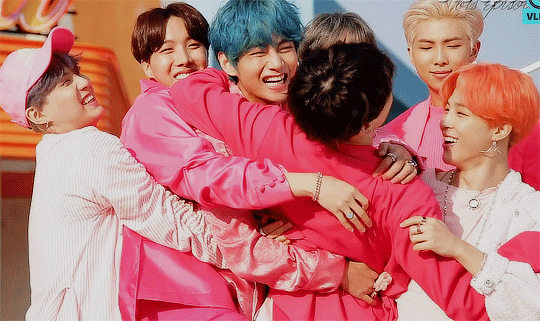
Environmental activism has also emerged within fandoms. KPOP 4 Planet unites fans to address climate change, racism, and political unrest, using Twitter to share critiques and ideas (Leksmono & Maharani 2022). By leveraging their collective voice, fandoms demonstrate the transformative potential of participatory culture.
The Pros and Cons of Fandom in the Social Media Era
Pros
Fandoms are incubators of creativity and connection. Fans reinterpret media through fan art, fiction, and other works, fostering a sense of community and support (Garon 2017). These spaces offer psychological benefits, enhancing self-worth and providing a sense of belonging (Tajfel 1981; Zubernis & Larsen 2018).
Through active participation, fans shape cultural narratives and form meaningful social bonds. Events like fan conventions and collaborative projects further deepen these connections, transforming fandoms into global communities.
Cons
However, fandoms are not without their challenges. Toxic behaviors like gatekeeping and fan wars can undermine inclusivity, creating divisions within communities (Carey 2023). Harassment and cyberbullying, often amplified by social media, harm mental health and erode the positive aspects of fandom spaces (Leksmono & Maharani 2022).
The video below is a response by popular classical musician YouTubers, TwoSetViolin after Blinks (Blackpink's fandom) attacked them after creating a parody of the girl group's latest comeback in 2022, "Shutdown". The song sampled famous classical music by Niccolò Paganini's second violin concerto, also known as "La Campanella", which prompted the two YouTubers to respond funnily, as it was sort of a crossover between K-pop and classical music. The video below featured hurtful and toxic remarks made by Blinks to TwoSetViolin, further emphasizing the cons of the fandom culture.
youtube
Industries also exploit fan loyalty by promoting excessive spending on merchandise or exclusive content, leading to financial strain (Wang 2020). Additionally, the pressure to stay active in fandoms can result in burnout, as fans feel compelled to constantly prove their dedication.
We as a fandom still have a long way to go and grow.
Fandoms are powerful cultural phenomena that bridge creativity, activism, and community. They provide spaces for connection and identity, exemplifying the benefits of participatory culture in a digitally interconnected world.
Yet, the challenges posed by toxicity, exploitation, and performative pressures highlight the need for inclusivity and balance within these spaces. By addressing these issues, fandoms can continue to thrive as hubs of creativity and social change, reflecting the evolving interplay between technology, culture, and human connection.
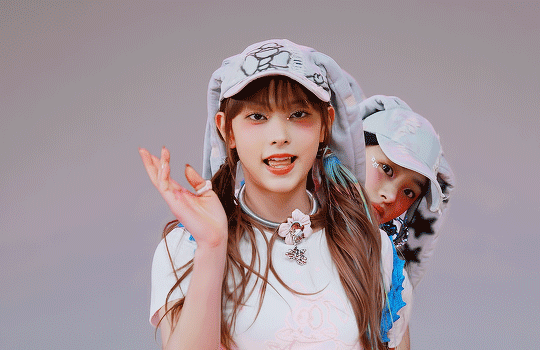
0 notes
Text
Crowdsourcing For Creativity & Innovation
and a look into LEGO Ideas

In 2023, LEGO Ideas continued to show how fans' creativity could shape the future of their favorite brand. Imagine submitting your own LEGO set design and seeing it turn into a real product on store shelves—a dream come true for any enthusiast (LEGO 2024). This is the power of crowdsourcing: engaging the public to share ideas and solve problems. LEGO Ideas taps into the passion and ingenuity of its fans, proving that sometimes the best ideas come from the people who know and love your brand the most.
Crowdsourcing is a game-changer, giving organizations a way to collaborate with creative individuals from all walks of life (Lenart-Gansiniec et al. 2022). From product design to community-driven innovation, it offers a platform for fresh perspectives and democratizes creativity. But it’s not without challenges. As companies rely more on the crowd for ideas, questions arise about fair compensation, intellectual property, and the role of traditional professionals (Schlagwein, Kecmanovic & Hanckel 2018).
This post focuses on LEGO Ideas as a leading example of how crowdsourcing fuels creativity and innovation. We’ll explore how this platform benefits both the brand and its fans and examine its broader impact on industries.
Crowdsourcing in Action: LEGO Ideas
For LEGO enthusiasts, LEGO Ideas offers the ultimate opportunity: turning their imaginative set designs into real products for people around the world to enjoy. This platform invites fans to upload their ideas, which gain support from the community through votes (LEGO Ideas 2024). Reaching 10,000 votes secures a spot for review by the LEGO Review Board, which determines whether a design will be produced. Successful creators receive compensation, including 1% of the set’s net sales, 10 complimentary copies of their product, and public recognition as the creator (LEGO Ideas 2024). Those who don’t make it still receive consolation prizes in the form of LEGO products.

Image of the approved LEGO Ideas sets from The Brothers Brick
This system benefits both fans and LEGO. Fans get a chance to transform their passion into something tangible, while LEGO accesses a diverse pool of creative ideas. This shift—from fans as passive consumers to active cultural producers—represents a significant change in how brands engage their audiences (Hermawan 2024). Fans contribute to the creation, growth, and enhancement of cultural content, which has major implications for industries like entertainment and design.
Crowdsourcing also offers economic advantages. For LEGO, it reduces research and development costs, as ideas come from an enthusiastic community rather than in-house teams (Dilmegani 2024). It also strengthens emotional connections between fans and the brand, fostering loyalty and engagement (De Vreede, De Vreede & Reiter-Palmon 2017). However, challenges such as ensuring fair compensation and addressing the highly competitive nature of the platform remain critical.
Also, if you're keen on Lego, an enthusiast, or just a casual builder, watch this video showcasing the possible new Lego sets we might potentially get from our talented fan designers!
Broader Role of Crowdsourcing in Innovation
Beyond LEGO Ideas, crowdsourcing has revolutionized innovation across industries. In healthcare, platforms like Foldit enlist the public to solve complex problems like protein folding, leading to breakthroughs that once relied solely on specialized researchers (Schrope 2013). In fashion, brands like Threadless turn fan designs into sellable products, combining community creativity with commercial success (Fast Capital 2024). Similarly, educational platforms like Duolingo and Khan Academy rely on user contributions to expand their libraries and make learning accessible worldwide (Heffernan et al. 2016).
youtube
A short 3 minute long video explaining Foldit in brief detail.
Crowdsourcing reflects a broader cultural shift: the democratization of innovation. By inviting participation from individuals regardless of credentials or location, it creates a diverse and inclusive pool of ideas (QMarkets 2024). This inclusivity not only enriches innovation but also challenges traditional notions of expertise and gatekeeping in various fields.
Advancements in technology further enhance the process. AI helps filter and analyze large volumes of submissions, identifying the most promising ideas, while blockchain ensures transparency in crediting contributors and managing intellectual property. These tools make crowdsourcing more efficient and equitable, ensuring that contributors are recognized and rewarded fairly (Ling et al. 2021).
What have we gotten so far about crowdsourcing in today's digital era?
Crowdsourcing has proven to be a transformative tool for fostering creativity, accelerating innovation, and connecting industries with global talent. Platforms like LEGO Ideas showcase how brands can successfully leverage the enthusiasm and creativity of their audiences to create products that resonate deeply with their customers. Across industries like healthcare, fashion, and education, crowdsourcing continues to redefine how problems are solved and ideas are generated.
As we look to the future, technologies like AI and blockchain offer promising solutions to improve transparency, efficiency, and fairness. Crowdsourcing’s potential as a tool for collaboration and innovation is immense, but its success hinges on responsible implementation. When used thoughtfully, it empowers individuals while fostering creativity and progress across industries.
Reference list
De Vreede, T, De Vreede, G-J & Reiter-Palmon, R 2017, Antecedents of Engagement in Community-Based Crowdsourcing, viewed 5 November 2024, <https://scholarspace.manoa.hawaii.edu/server/api/core/bitstreams/c8025e3d-22e2-4221-aecd-1e6b5a53a8b7/content>.
Dilmegani, C 2024, ‘Crowdsourcing in 2023: Types, Benefits & Top Use Cases’, Research AI Multiple, viewed 5 November 2024, <https://research.aimultiple.com/crowdsourcing/>.
Fast Capital 2024, ‘User Generated content: User Generated Design: Design by the Masses: the Influence of User Generated Design - FasterCapital’, FasterCapital, viewed 4 November 2024, <https://www.fastercapital.com/content/User-generated-content--User-Generated-Design--Design-by-the-Masses--The-Influence-of-User-Generated-Design.html>.
Heffernan, NT, Ostrow, K, Kelly, KM, Selent, D, Van, EG, Xiong, X & Williams, JB 2016, ‘The Future of Adaptive Learning: Does the Crowd Hold the Key?’, Springer Nature Link, vol. 26, no. 2, pp. 615–644, viewed 5 November 2024, <https://link.springer.com/article/10.1007/s40593-016-0094-z>.
LEGO 2024, ‘Discover all the amazing ideas made by and voted for by LEGO® fans.’, LEGO, viewed 4 November 2024, <https://www.lego.com/en-us/themes/ideas/about>.
LEGO Ideas 2017, ‘LEGO IDEAS - Product Idea Guidelines’, Lego, viewed 28 November 2024, <https://ideas.lego.com/guidelines>.
Lenart-Gansiniec, R, Czakon, W, Sułkowski, Ł & Pocek, J 2022, ‘Understanding Crowdsourcing in Science’, Review of Managerial Science, vol. 17, viewed 4 November 2024, <https://link.springer.com/article/10.1007/s11846-022-00602-z>.
Ling, R, Sit, HF, Balaji, S, Lam, AIF, Latkin, CA, Tucker, JD & Hall, BJ 2021, ‘Crowdsourcing to design a marketing package to promote a WHO digital mental health intervention among Chinese young adults’, Internet Interventions, vol. 25, p. 100397, viewed 4 November 2024, <https://www.sciencedirect.com/science/article/pii/S2214782921000373>.
NASA 2024, ‘Prizes, Challenges, and Crowdsourcing’, NASA, viewed 4 November 2024, <https://www.nasa.gov/prizes-challenges-and-crowdsourcing/>.
QMarkets 2024, ‘Crowdsourcing Innovation: Leveraging Ideas for Growth’, QMarkets, viewed 5 November 2024, <https://www.qmarkets.net/resources/article/crowdsourcing-innovation/>.
Schrope, M 2013, ‘Solving Tough Problems with Games’, Proceedings of the National Academy of Sciences of the United States of America, vol. 110, no. 18, National Academy of Sciences, pp. 7104–7106, viewed 5 November 2024, <https://pmc.ncbi.nlm.nih.gov/articles/PMC3645561/>.
0 notes
Text
Is blogging still relevant in the age of TikTok & Instagram?

Image from ContentWriterIreland
With the rapid evolution of digital platforms, questions like this highlight the shifting role of blogging in a world dominated by quick, visual content. Rather than fading away, blogging has adapted to new trends and the changing needs of readers. Blogs are spaces for regularly updated content, posted chronologically (Goldstein 2009, cited in Heinen et al. 2024), and platforms like WordPress, Wix, Squarespace, and Medium (Ashbridge 2024) continue to make blogging accessible. Even as visual platforms thrive, blogs offer something unique: room for long-form content and a deeper level of community engagement (Bottle 2024), setting them apart in today’s digital landscape.
Blogging as a Public Sphere

Early coffee shops were central to what we now call the public sphere / Getty Images
Heinen et al. (2024) argues that blogging isn’t just a way to improve writing skills; it’s a space for people to engage in real, meaningful conversations. Blogging platforms give individuals a place to share their thoughts and connect with like-minded readers, creating a “public” setting where shared opinions and mutual understanding can actually take shape. This idea echoes Jürgen Habermas’s concept of the “public sphere”—an ideal space where people come together to discuss common issues openly, guided by logic and a sense of the public good.
Unlike traditional media, which is often steered by corporate interests, blogging platforms offer a more independent, open forum for public dialogue (Mummery & Rodan 2013). By sticking to these principles of open, reasoned debate, blogging keeps alive a sense of authentic community engagement—something that mainstream media often struggles to achieve as it leans toward profit-driven narratives.
The Evolution of Blogging

Image by Quickframe
Blogging has had to adapt to stay relevant in a world ruled by TikTok and Instagram. Short, snappy videos are hard to beat for quick engagement. Platforms like TikTok and Instagram have become the go-to for marketers aiming for trendy, digestible content (Mou 2020, cited in The et al. 2021). But blogging isn’t out of the game yet. Over 60% of internet users read blogs, with a huge 77% engaging daily—billions of readers. Notably, more young people in the UK are reading blogs now than in 2010 (Bottle 2024).
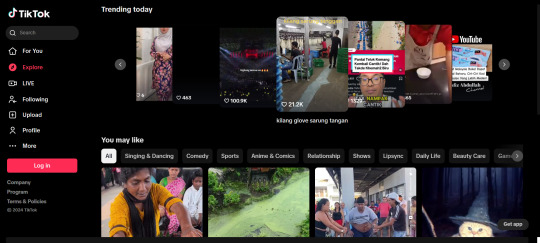
Blogging has also diversified. Today’s blogs cover everything from lifestyle and travel to finance and tech, creating communities around specific interests. Unlike short-form videos that provide instant entertainment, blogs invite readers to slow down and engage with narratives. By incorporating visuals like videos, gifs, and memes, blogs enhance the reading experience, blending depth with digital interactivity.
Unique Benefits of Blogging
One of blogging’s biggest strengths over platforms like TikTok and Instagram is its flexibility for in-depth content (Lou 2024). Blogs allow creators to explore complex topics, share insights, and document processes—all of which attract loyal audiences looking for substance. Additionally, blogs act as personal portfolios or archives, showcasing growth and expertise in ways transient social media posts can’t.
Another advantage is Search Engine Optimization (SEO) (Coleman 2014). Blogs optimized with the right keywords can achieve long-term visibility on search engines like Google, driving organic traffic. Unlike social media posts, which are limited to platform algorithms, blogs extend their reach to new audiences over time. This makes them invaluable for brands and creators wanting a sustained digital presence.
The Future of Blogging
What’s next for blogging in a world obsessed with quick TikTok dances and Instagram reels? It’s all about adapting while keeping the essence of storytelling and connection. As short-form content dominates, blogs can innovate with more visuals, bite-sized posts, or embedding TikToks and Reels into their narratives. Collaborations between bloggers and influencers can also bridge the gap, offering content that’s both engaging and insightful.
AI tools and advanced SEO could further personalize blogs, turning them into digital havens for readers with specific interests. Whether it’s DIY hacks or gaming guides, blogs provide a depth of content that short-form videos can’t fully replicate.
What did we learn?

Blogging isn’t just surviving—it’s thriving by embracing its strengths: fostering communities, diving into meaningful topics, and adapting to new trends. TikTok and Instagram might be the kings of quick engagement, but blogs remain the masters of depth and storytelling.
The real question is, as technology evolves, how will blogging reinvent itself again? Whether through shorter posts, innovative visuals, or strategic collaborations, blogs prove that they’re not just relevant—they’re essential.
Reference list
Bottle 2024, ‘Bottle Digital PR’, Bottle Digital PR, viewed 4 November 2024, <https://www.wearebottle.com/blog/is-blogging-dead>.
Coleman, B 2014, ‘Blog SEO: How to Search Engine Optimize Your Blog Content’, HubSpot Blog, viewed 26 November 2024, <https://blog.hubspot.com/marketing/blog-search-engine-optimization#:~:text=Blogging%20helps%20boost%20SEO%20quality,site%20more%20appealing%20to%20visitors.>.
Heinen, R, Duffy, M, Fox, JW, Heard, SB, McGlynn, T, Ollerton, J, Rillig, MC, Saunders, ME, Millman, CA & Antunes, R 2024, ‘Don’t Forget the Blogosphere’, Annals of Applied Biology, vol. 185, no. 2, Wiley, pp. 124–131, viewed 26 November 2024, <https://onlinelibrary.wiley.com/doi/abs/10.1111/aab.12935?casa_token=Dsm_6_wqXVEAAAAA%3Akfk0pw7uMXKgJzqNfufUNRKfhGyK_BQRRa22oFoV3JDSLDTgM5rnOyTIs8mYlc8KJV1LT-cnPccJQs8>.
HubSpot 2022, ‘The 13 Best Blogging Platforms for 2023 (& How to Pick One)’, blog.hubspot.com, viewed 26 November 2024, <https://blog.hubspot.com/marketing/best-blogging-platform>.
Lou, S 2024, ‘Blogging Vs Instagram: Which One Is the Best?’, A Picturesque Life, viewed 26 November 2024, <https://apicturesquelife.com/2024/04/11/blogging-vs-instagram/>.
Mummery, J & Rodan, D 2013, ‘The role of blogging in public deliberation and democracy’, Discourse, Context & Media, vol. 2, no. 1, pp. 22–39, viewed 26 November 2024, <https://www.sciencedirect.com/science/article/pii/S2211695812000694?casa_token=LlYIZq3jfhgAAAAA:TbJd6uW5vCQaKncm41yMKfutzr7GBoGjNOAgTAd0Gscs00DWh3ZwXPoQf0lOq_JZO8jCbY5f1GA>.
The, Y, Ing, S, Shakariza, S & Darmalim, E 2021, ‘A Study Comparison between TikTok and Instagram: Impact of Ad Informativeness, Ad Credibility and Ad Entertainment to Purchase Intention with Attitude Towards Advertisement as Mediator’, Turkish Online Journal of Qualitative Inquiry (TOJQI), vol. 6, pp. 6322–6334, viewed 26 November 2024, <https://www.tojqi.net/index.php/journal/article/download/2684/1798/2993>.
0 notes
Text
a little about me :]
I'm a 2nd year, 1st-semester media & communication student, she/her, and it feels surreal that I am entering my 2nd year in Swinburne.
I enjoy internet media the most especially the horror side of the internet. One of my biggest obsessions is the SCP Foundation, a web-based sharing platform featuring supernatural, sci-fi entities (SCP 096, is one of the most famous ones).
I enjoy playing games but not FPS haha...it stresses me out. I prefer more laid-back chill games, where I can do anything I want (The Sims, Stardew Valley, and Unpacking are some of my favorite ones).
I would love to know what your interests are too! If we happen to sit together, don't be afraid to talk about your interests! I would love to hear it <3
2 notes
·
View notes
Text
About the Blog!
I like to make my blog as pretty as possible even if it's for assignment purposes! This blog is strictly for educational purposes only showcasing opinions and discussions about certain topics in class. Should there be similarities in my post, it is purely coincindental! Don't hesitate to reblog my posts; I will be sure to read yours too!
You can ask me anything, and I will answer!
Have a great day!

2 notes
·
View notes